Hi, welcome back!
One of my habits for clearing my head and trying to relax a bit during this pandemic has been to go for walks around the neighborhood. My neighborhood (Pac Heights) has some really fancy houses in it, which is the main focus of this issue: the gorgeous brick houses that line the streets. The entire neighborhood isn’t brick houses, but highlighting all the brick houses on the street is like a little fun game, I call it my brick house tour.
Won’t You Be My Neighbor?
But before we get in to appreciate some of these pretty houses, we need to talk about what’s hiding inside of them.
Firstly, there is a nonzero number of pretty heinous people living inside some of these houses. If you want to get upset, watch the now-viral video that James Juanillo, a fellow Pacific Heights resident, recorded. A “Karen” makes it very clear she felt he didn’t belong (no doubt because of his skin color) and didn’t have the right to chalk Black Lives Matter on his own property (because she didn’t even believe it was even his).
Secondly, the houses themselves, and their value, is a huge source of racial inequity and inequality. Black people and other people of color have historically been excluded from owning property at all, thanks to layers of redlining policies. So statistically speaking, the “Karen” might have been right that James didn’t live in the neighborhood (people do call our neighborhood Specific Whites sometimes).
Housing is a human right, but in San Francisco you don’t have to look far to see that we leave a lot of people unhoused. And all across America, even if you do have housing, we don’t protect all houses equally, even in the face of predictable natural disasters like California’s perennial wildfires.
This week’s long read is an except from “Ecology of Fear: Los Angeles And The Imagination Of Disaster” that Mike Davis wrote in 1998, illustrating the supreme lack of compassion and common sense in Los Angeles’s housing policies: essentially throwing money away to protect or rebuild rich people’s homes in dangerous areas, rather than investing in poor people’s housing where it could save more lives. It’s one of those pieces that is eerily relevant 20 years later (and includes an update connecting to the Paradise fires more recently).
If enormous resources have been allocated, quixotically, to fight irresistible forces of nature on the Malibu coast, then scandalously little attention has been paid to the man-made and remediable fire crisis of the inner city.
…
By declaring Malibu a federal disaster area and offering blaze victims tax relief as well as preferential low-interest loans, the Eisenhower administration established a precedent for the public subsidization of firebelt suburbs.
from “The Case for Letting Malibu Burn” (September 1998)
I’m sure you could write a similar tome about how San Francisco also participates in similarly poor housing policies. Some of the oldest houses in all of San Francisco, the ones that survived the 1906 earthquake, are in Pacific Heights because the neighborhood is on top of bedrock. However, there is much more new housing being constructed along the waterfront: Mission Bay, Hunter’s Point, Bayview, Treasure island. Ignoring the fact that this construction displaces already poor to happen, all those areas are landfill and are much more susceptible to liquefaction when (not if) San Francisco’s next big earthquake hits. It would be much safer to build higher (way higher) in a neighborhood like Pacific Heights, where we already have a small number of high-rise builds. But NIMBY attitudes seem to be prevailing so far.
Ok Just Show Pictures Already
So that’s all some food for thought to keep in mind when looking at these houses. As far as I can tell, they’re all single-family homes, and I’m sure the cheapest one would still sell for something like $4 million.
All the pictures below are from one particular evening walk in March, all along Pacific Ave. There’s not much to add other than I really enjoy this aesthetic. My mom will probably tease me, one of the reasons I made up when I was in high school for why I didn’t like a particular college campus (UVA) that we visited was because “there were too many brick buildings.” But, onward!
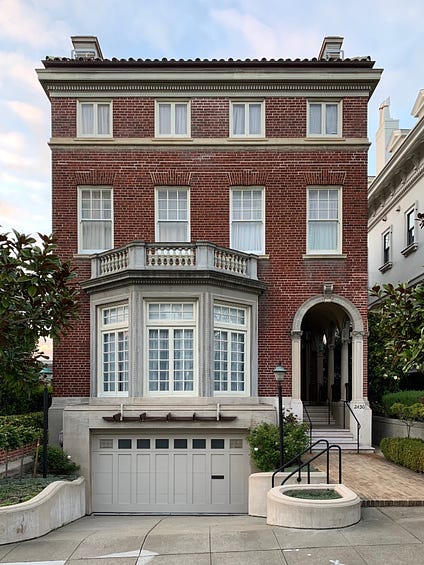
I really like the color of the bricks on this house, and all the smooth, rounded concrete in their driveway.
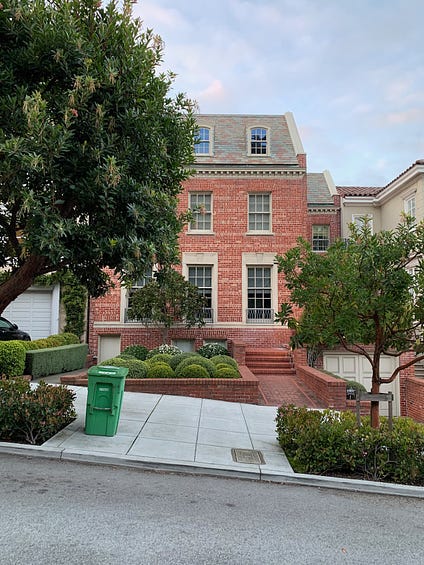
This house really committed to bricks, the walkway, garage, everything is brick.
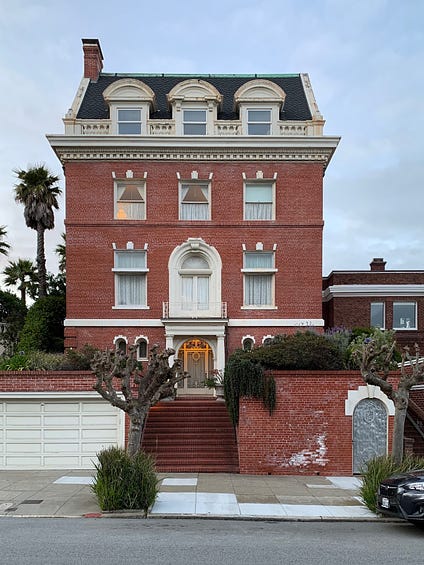
I like this one overall too, especially the intricate door on the right side.
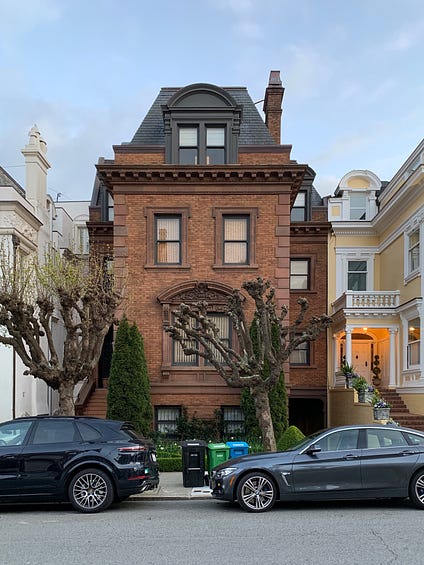
I don’t know the technical term, but I like that this house spices things up with some brown-colored bricks.
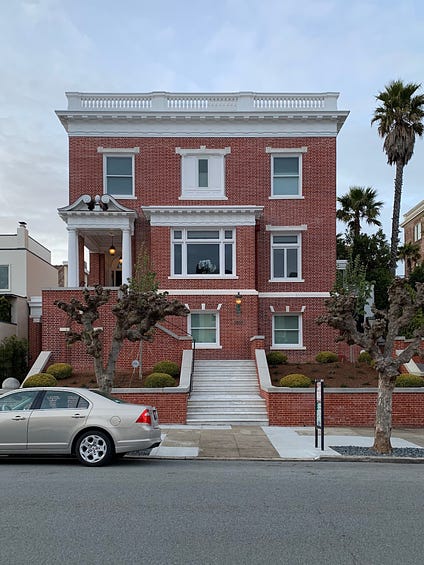
I love the columns over the entryway here, and the railing on the roof probably makes for a really nice deck up there.
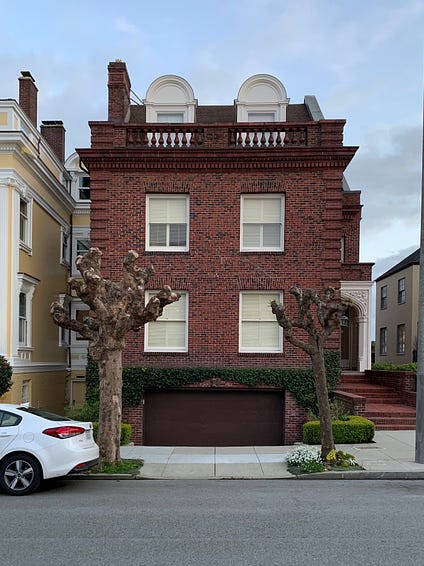
The ivy growing on this house is a fun touch!
I had a ton of fun taking these. I tried to get a very square, head-on frame. Then I used the iPhone’s built-in tools to patch the perspective a bit to make them even more. It was a gorgeous evening, probably right about golden hour.
Let’s build a future where everybody can have a safe home to call their own.
XOXO,
Margs